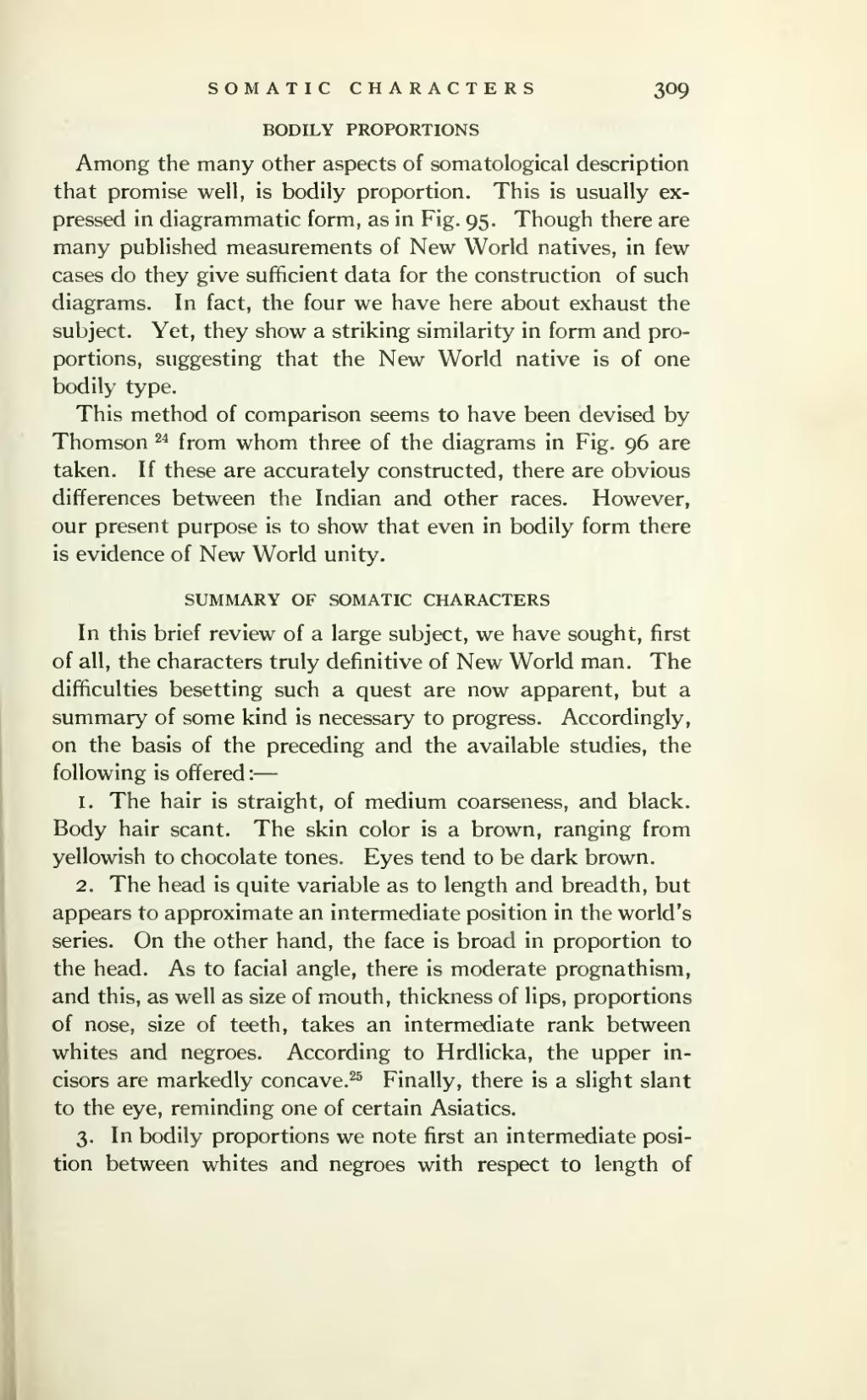BODILY PROPORTIONS
Among the many other aspects of somatological description that promise well, is bodily proportion. This is usually expressed in diagrammatic form, as in Fig. 95. Though there are many published measurements of New World natives, in few cases do they give sufficient data for the construction of such diagrams. In fact, the four we have here about exhaust the subject. Yet, they show a striking similarity in form and proportions, suggesting that the New World native is of one bodily type.
This method of comparison seems to have been devised by Thomson[1] from whom three of the diagrams in Fig. 96 are taken. If these are accurately constructed, there are obvious differences between the Indian and other races. However, our present purpose is to show that even in bodily form there is evidence of New World unity.
SUMMARY OF SOMATIC CHARACTERS
In this brief review of a large subject, we have sought, first of all, the characters truly definitive of New World man. The difficulties besetting such a quest are now apparent, but a summary of some kind is necessary to progress. Accordingly, on the basis of the preceding and the available studies, the following is offered:—
1. The hair is straight, of medium coarseness, and black. Body hair scant. The skin color is a brown, ranging from yellowish to chocolate tones. Eyes tend to be dark brown.
2. The head is quite variable as to length and breadth, but appears to approximate an intermediate position in the world's series. On the other hand, the face is broad in proportion to the head. As to facial angle, there is moderate prognathism, and this, as well as size of mouth, thickness of lips, proportions of nose, size of teeth, takes an intermediate rank between whites and negroes. According to Hrdlicka, the upper incisors are markedly concave.[2] Finally, there is a slight slant to the eye, reminding one of certain Asiatics.
3. In bodily proportions we note first an intermediate position between whites and negroes with respect to length of
